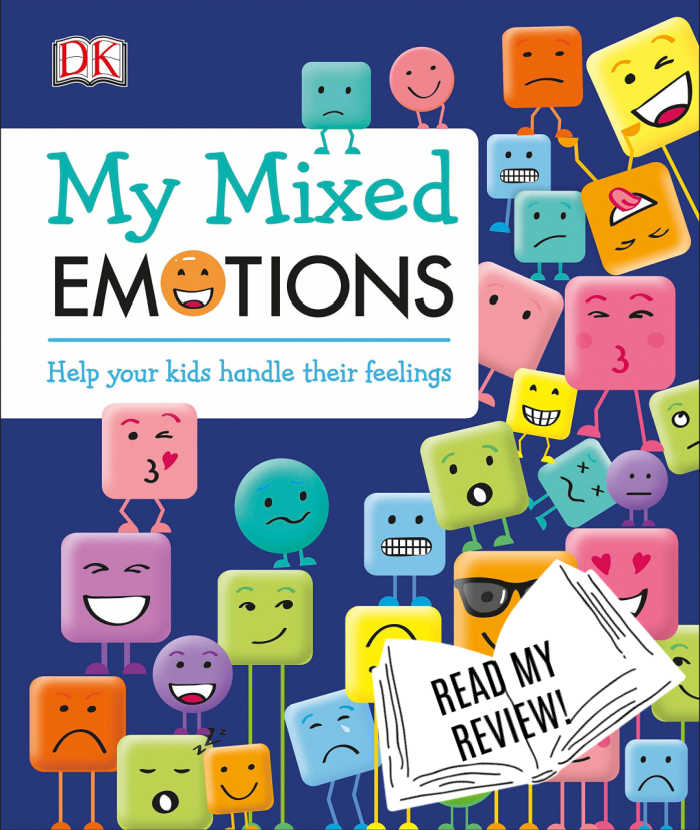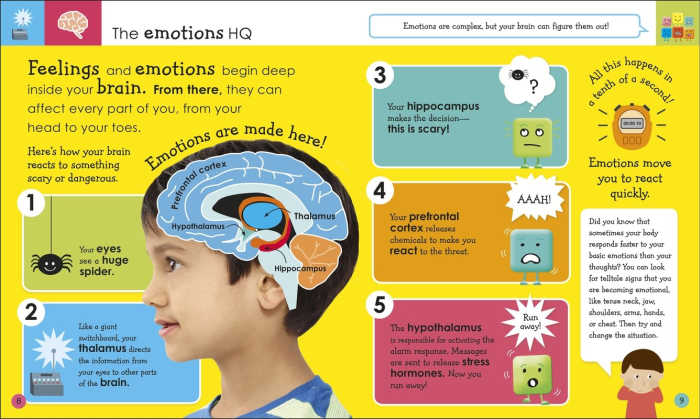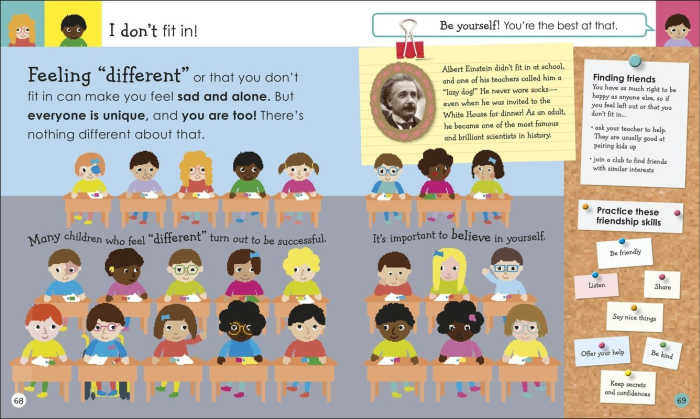Our feelings can be complicated, confusing, and hard to handle. This is true for adults and even more true for kids. I know that I don’t always respond well to my own emotions, yet I’m trying to teach my kids to manage theirs. My Mixed Emotions from DK Books has been a great way to talk about emotions (when we’re not super emotional!) with my kids. Knowing some strategies for dealing with anger, fear, and sadness before we encounter these emotions has been helpful. If you’re looking for ways to help your kids handle their feelings, read on for more about this book!

I received this book courtesy of the publisher; all opinions expressed remain my own. This post contains affiliate links; as an Amazon associate, I earn from qualifying purchases.
What are Emotions?
As you know, your children oftetimes feel big emotions and need assistance in learning how to manage them. They might feel sad, glad, angry, or frustrated, as examples. My Mixed Emotions, the book in your hand, is one tool that will help your children begin to identify their emotions and ultimately, manage them. ~ Maureen Healy
My Mixed Emotions begins with a chapter about emotions in general. These pages explain how emotions are generated within your brain, how these emotions make us feel physically, and why we need emotions. Kids are reassured that all emotions are natural and it’s okay to show our feelings. (Even as an adult, I often need that reminder!)

This chapter also explains that scientists believe most emotions can be boiled down to four basic emotions: happiness, anger, fear and sadness. These four big emotions are the focus of My Mixed Emotions. The next four chapters cover happiness, anger, fear and sadness in more detail.
Bright colours, fun fonts, and engaging illustrations help kids connect with the concepts taught in this book. I read My Mixed Emotions aloud to my younger two daughters, but children who are good readers would have no problem reading it to themselves.
My Mixed Emotions: Happy, Angry, Scared, Sad
Each of the four chapters on emotions continues to explain these emotions to kids in scientific terms. For example, the chapter on happiness teaches kids about the happiness hormones: dopamine, serotonin, oxytocin. The chapter on anger breaks this emotion down in five stages, showing how it affects us mentally and physically. Because emotions can often feel overwhelming, I think it’s useful for kids to look at them in this analytical way.
Each chapter also provides kids with concrete ways to deal with their emotions. From breathing techniques to gratitude lists to working through worry, these tools will help kids know what to do when hit with big emotions. Of course, these tools will need to be practiced! Reading My Mixed Emotions once likely won’t cause your kid to stop and say, “I’m angry,” before putting their hands in their pockets or asking someone for a hug.
One of the certainties of parenting is that your children will experience all sorts of emotions (sometimes all in one day!) and will routinely face circumstances they don’t like. Helping your child to grow emotionally involves teaching them to recognize certain emotional responses in themselves and then to express those feelings appropriately. ~ iMom
In talking about the four big emotions, My Mixed Emotions also teaches kids about related emotions, such as gratitude, calmness, depression, jealousy, worry, etc. If your child frequently says, “That’s not fair!” or deals with anxiety, these pages can help them understand their reactions better. Different kids are triggered by different emotions, so your child may identify more with certain chapters than others. Or you may want to peruse the book before your child does, and help direct them to the chapter that they’d find most helpful.

Certain circumstances can cause us to have big emotions, and My Mixed Emotions touches on a few of these. There’s a couple pages that discuss separation and divorce, the death of a pet, bullying, new beginnings, and other topics. If you have a child going through one of these circumstances, this book could help them sort through their feelings (and see that what they are going through is normal). For example, we’ve dealt with bullies at playgrounds, so the girls and I chatted a bit about that experience and how it made them feel.
You are You
Today you are you. That is truer than true. There is no one alive who is youer than you! ~ Dr. Seuss
Each chapter begins with a quote that illustrates something about our emotions. I love this quote from Dr. Seuss. While emotions are normal and natural and common to all of us, they also make us unique. It’s good to know that other people feel angry, sad, happy and scared too, but it’s also good to know that our emotions are part of what makes us unique. The way that we each react to situations—how we feel about what goes on around us—is part of what makes us different from each other.
The final chapter in My Mixed Emotions explores this aspect of emotions. It’s a positive wrap-up to the entire book, encouraging kids that they can be whatever they want to be and do whatever they want to do.
Finally, the book also includes a dictionary (with emotions listed under the categories of sad, happy, angry and scared), glossary and index. The note for grown-ups in the first page also includes a list of resources for professional help, if your child still struggles with their emotions.
My thoughts on My Mixed Emotions
Overall, I thought this was a super helpful book in discussing emotions with kids. The bright pictures and attractive illustrations make this sometimes scary topic more non-threatening. Kids will understand the science behind their emotions and learn great tools for handling emotions. As a homeschool mom, I can see so many ways to build on this book to help my kids apply what they’ve read about (like practicing the tools in the book, drawing their own illustrations of emotions, role-playing some scenarios with each other, etc.).
As KidsHelpLine says, “Being a parent means you’ve got a really important role to play in helping kids understand their feelings and behaviours. Kids need to be shown how to manage their feelings in positive and constructive ways.” My Mixed Emotions can help both parents and kids to understand feelings and behaviors and manage them positively.
This year has been one of big emotions for many of us. We’ve been pushed and stretched in many ways. And while we adults may try to shield our kids from certain events that would cause worry and anxiety and other emotions, kids often pick up on those anyway. As we spend more time together, emotions can often get out of control. We annoy each other, we snap and grumble about things, and we need to make up. This book can help families discuss emotions in a helpful, positive way and find ways to overcome some of those negative emotions we’ve had to deal with lately. (And hey, if you just buy it for yourself, I won’t tell anyone!)
Have you talked with your kids about their mixed emotions? How do you help your children handle big feelings?

No Responses Yet